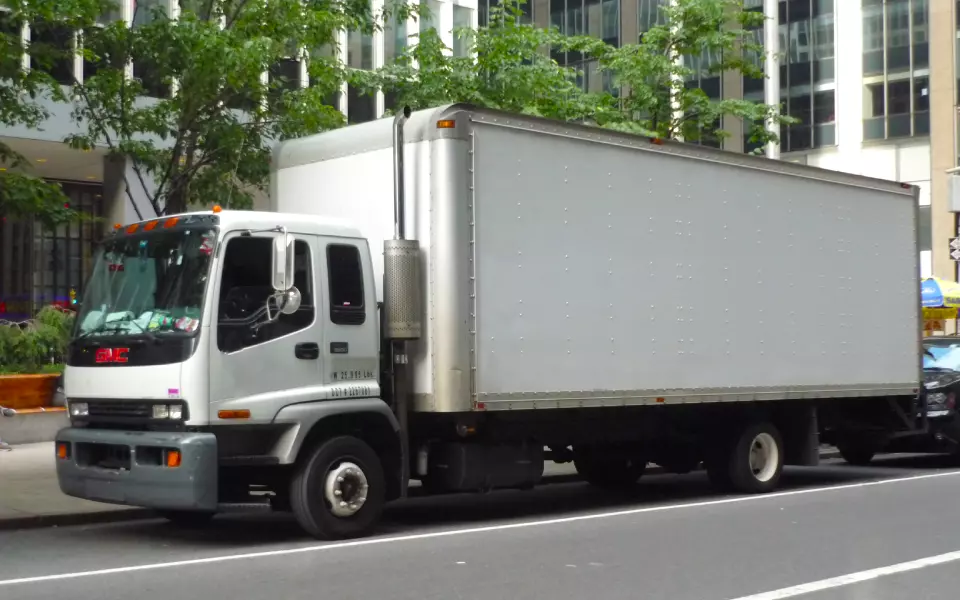Delivery fees can make up a large portion of the overall order fee, as people and companies are often confronted with unforeseen expenses and undisclosed accessorial charges in addition to the standard delivery fees.
Limited access delivery fees are one of the several factors that can contribute to these additional costs. Limited access delivery is the process of transporting cargo to and from commercial and non-commercial locations that may be deemed to have limited access.
This generally encompasses places that are difficult to access, due to congested routes, strict security requirements, or limited infrastructure. Popular examples include busy airports, military facilities, schools in busy commercial areas, and storage units in remote or isolated locations.
Most carriers charge an extra fee for limited-access deliveries to compensate for the additional time and effort spent during the transportation process. Some carriers also use these additional fees to compensate incurred expenses for offsetting limited access constraints such as taking an alternate (longer) route or delivering cargo outside regular hours; all of which increases the carrier’s truck expenses.
These charges typically vary according to several factors, such as the carrier’s business model, delivery location, difficulty of access, shipment volume, equipment requirements, cargo type, and more.
In this article, we’ll explain in detail what limited access deliveries are and list the areas deemed as “Limited Access”. Finally, we’ll talk about the limited access delivery charges and answer some of the most frequently asked questions.
Limited Access Delivery Conditions
Limited access deliveries are deliveries made to areas that are harder to access due to location, road closures, congestion, and other reasons. There are several types of criteria that would classify a location to be of “Limited Access”.
- Not Open to Public – These are roads or facilities that don’t allow access to the public. They include places like military facilities, private estates, manufacturing plants, and more.
- Heavily Congested – Heavily congested areas are locations with high levels of human or vehicular traffic, such as urban cities. These places usually slow truckers down and force them to idle unnecessarily, which increases their cost per mile.
- Narrow Roads – Many delivery destinations with narrow roads are not wide enough to allow large semi-trucks to pass through or maneuver to enter a facility. This requires carriers to dispatch multiple smaller trucks to deliver the cargo, which increases their overall cost.
- Limited Unloading Options – Some facilities don’t have dedicated unloading options and require special equipment to handle cargo. As a result, carriers often charge a Limited Access Delivery fee to account for additional cargo handling services and potential delays.
- Remote Location – Remote locations are delivery locations that are far away from conventional trucking routes or populated cities. Examples include small towns, development areas, and borders.
- Security Concerns – Limited access deliveries can also include locations with security concerns, such as vandalism, theft, and other crimes. Hence, many carriers charge extra to compensate for their additional effort to travel through these areas.
Locations Typically Deemed as Limited Access
As mentioned above, several areas can be deemed “Limited Access” due to physical characteristics, navigational difficulties, business disruptions, and security issues. Let’s explore these locations in more detail.

Schools, Colleges, & Universities
Areas or routes along educational institutes like schools and colleges are mostly limited-access areas. These areas present various hazards, including pedestrians. As a result, they have lower speed limits, time restrictions, and other limitations, which can slow truckers down, especially when moving short-haul cargo and making multiple deliveries.
Hospitals & Nursing Homes
Hospitals and nursing homes have more traffic restrictions than regular routes and other limited access areas. Trucks are only allowed in the two right-most lanes and must operate at reduced speeds to ensure pedestrian safety, especially near hospital entry and exit points.
Entertainment Complexes
Routes with entertainment complexes, such as cinemas, casinos, bowling alleys, museums, and aquariums, typically have more traffic levels than regular routes. As a result, deliveries take longer as truckers will likely get stuck in traffic and travel at lower speeds.
Shopping Malls
Similar to entertainment complexes, shopping malls are hotspots with increased vehicular and pedestrian traffic. As a result, trucks may face heavy traffic, especially when delivering goods to supermarkets and malls.
Construction Sites
Construction sites are typically located in new or remote areas and may have undeveloped road infrastructure, which forces truckers to drive on rough, uneven terrain, putting their vehicles and cargo at risk of damage.
Places of Worship
Places of worship, such as churches, temples, and mosques, have high levels of human traffic at certain times of the day or week. Just like schools and hospitals, they’re highly susceptible to accidents, traffic, and road closure. Therefore, they have lower speed limits and tighter traffic restrictions, both of which can delay truck drivers and disrupt their schedules.
Government Facilities
Government facilities are high-security locations that often require cargo trucks to go through multiple security checks, which makes the transit longer. As a result, truckers usually charge a Limited Access Delivery fee to compensate for time wastage and the additional administrative processes involved.
Cafes, Restaurants, & Bars
Cafes, restaurants, and bars are popular eateries in commercial parts of cities and towns. Therefore, they’re also prone to higher levels of traffic and safety hazards. Moreover, in comparison to highways and freeways, they’re located on relatively narrower roads, making driving more difficult for truckers.
Offices & Hotels
Offices and hotels are usually located in commercial hotspots with high pedestrian and vehicular traffic. Trucks passing through these areas usually take longer to deliver cargo to these locations than to locations with open highways and minimal disruptions.
Farms, Fields, & Mines
Farms, fields, and mines are typically located in remote areas and are far away from highways and typical trucking routes. Hence, shippers looking to transport cargo to these locations usually have to pay a Limited Access Delivery fee.
Limited Access Delivery Fees & Charges
As mentioned above, delivering cargo to limited-access locations may incur extra charges. Most trucking companies and owner-operators impose an additional fee (called a Limited Access Delivery Fee) for transporting cargo to these difficult-to-access locations.
However, this charge varies based on several factors, especially the location and access limitations. For instance, deliveries to remote areas or on unsafe routes typically incur a higher fee than deliveries on school or college routes.
Due to these dependencies, trucking companies may impose Limited Access Delivery Fees ranging between $50 and $400.
Frequently Asked Questions
While the concept of limited access deliveries is straightforward, we understand that you may have questions regarding the fee structure and if they can be either avoided or reduced. We’ve made sure to address these questions below.
Can Limited Access Delivery Fees Be Avoided?
Limited Access Delivery fees can be avoided only if the cargo is to be delivered to accessible locations or if the trucking company chooses not to impose them. Due to the high level of competition, most truckers are already operating with a tight profit margin and are more likely to keep these fees.
Moreover, transporting cargo to limited access locations may require more equipment, and labor, and may even disrupt their scheduling or increase their overheads.
However, it is not uncommon for carriers to negotiate with recurring clients and waive the charges to establish long-term relationships.
How Can I Reduce Costs Associated With Limited Access Deliveries?
Shippers and consignees can reduce costs associated with limited access deliveries in many ways. Below are a few effective tips:
- Offering unloading bays (if possible)
- Requesting delivery at non-peak hours (avoiding time-restricted routes, traffic, and congestion)
- Choosing convenient delivery locations
- Arranging sufficient labor and equipment for quicker loading and unloading time

Get Free Course Access
If you enjoyed the article, don’t miss out on our free supply chain courses that help you stay ahead in your industry.

Agnes Aui
Head of Marketing
at freightcourse
About the Author
Agnes is the Head of Marketing at freightcourse and seamlessly blends her strong background in content management with strategic marketing expertise.
She brings a wealth of knowledge to readers, specializing in various e-commerce topics such as order fulfillments, purchasing, payments, and more.
Follow us